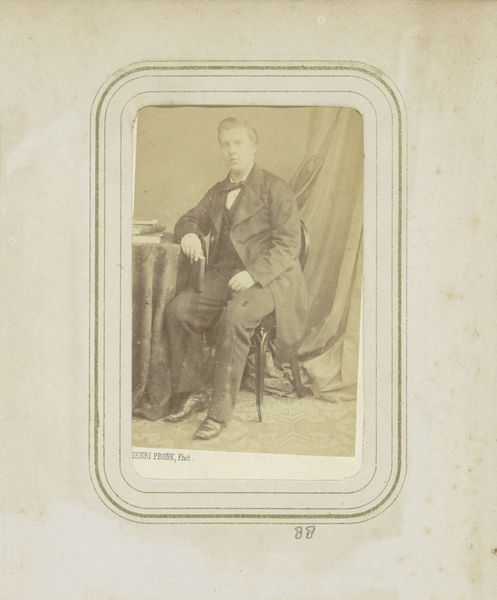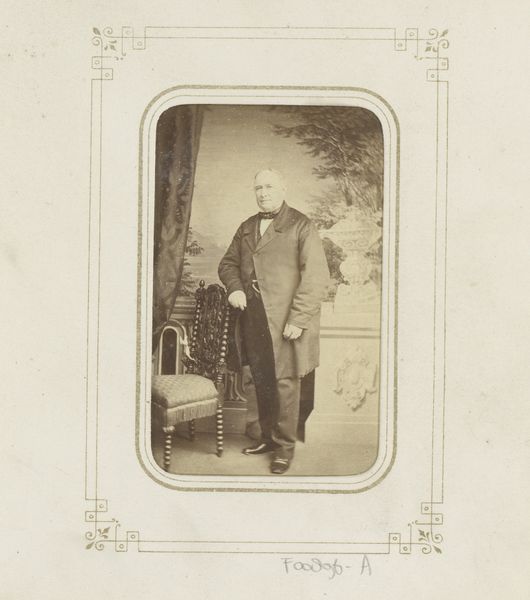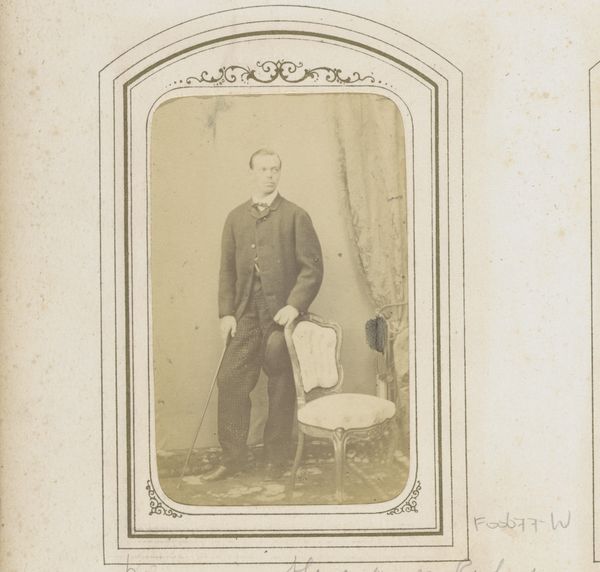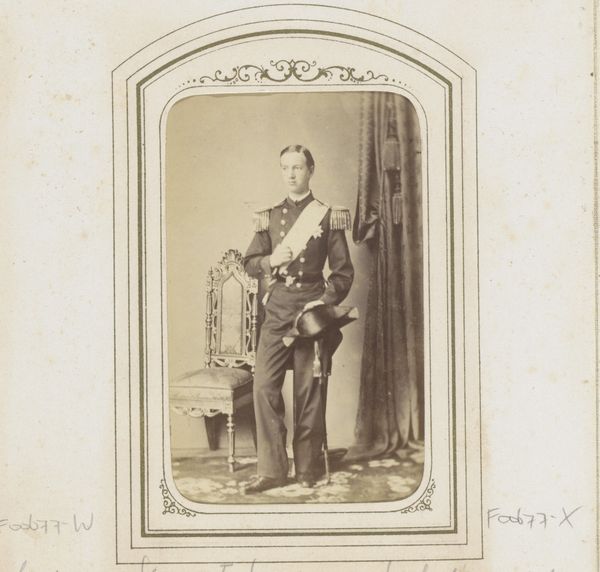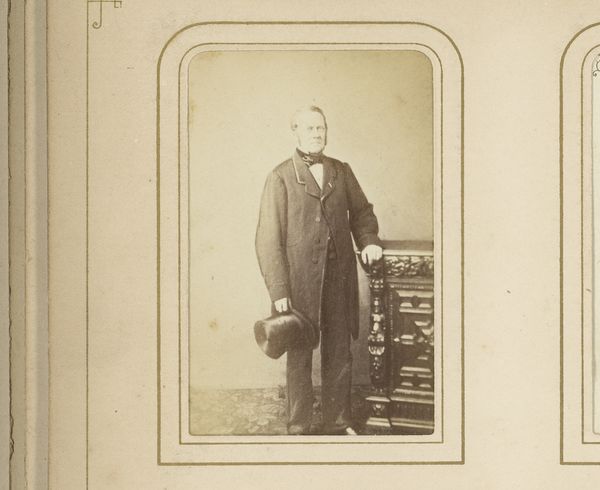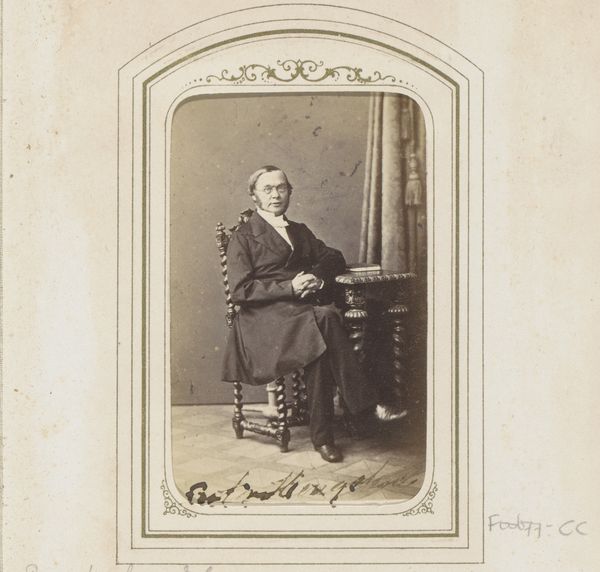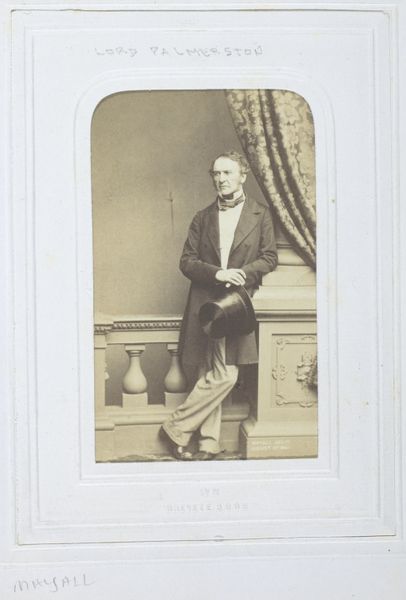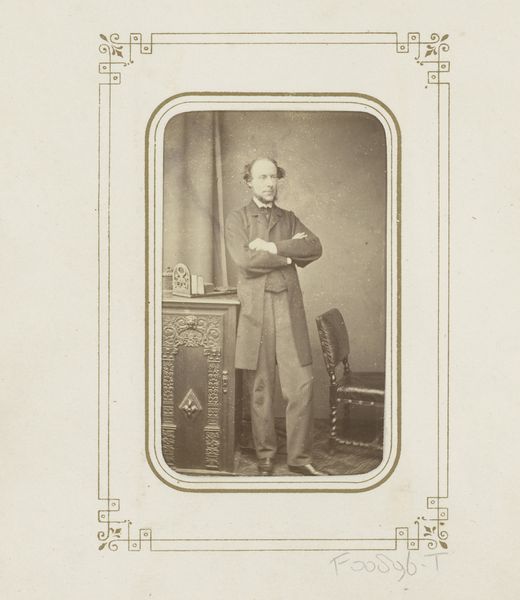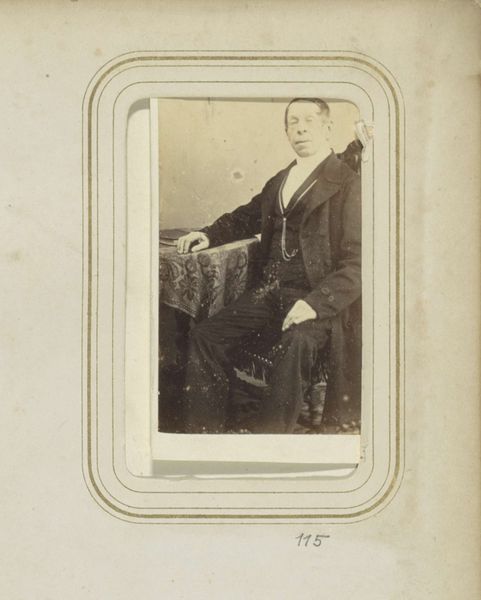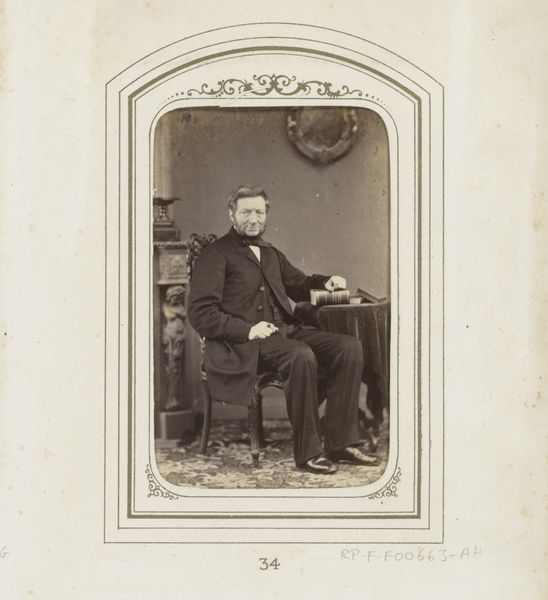
photography, gelatin-silver-print
#
portrait
#
photography
#
historical photography
#
historical fashion
#
gelatin-silver-print
#
19th century
Dimensions: height 85 mm, width 53 mm
Copyright: Rijks Museum: Open Domain
Editor: We’re looking at “Portrait of Carl Büchsel,” a gelatin silver print from around 1855-1870, attributed to Leopold Haase & Co. It's a pretty standard portrait composition, but the subject looks a little… stiff? What strikes you most about it? Curator: It's true, the pose is quite typical of the era. These early photographs, like painted portraits before them, were carefully staged performances of social standing. Notice how Büchsel isn't just standing there. The ornate chair and draped curtain are props, symbols contributing to the construction of his public image. How does this staged presentation speak to the social values of the time? Editor: I guess it’s saying something about the importance of appearing respectable and well-off. The background details and formal wear communicate stability, maybe even a bit of bourgeois aspiration? Curator: Exactly. The “respectable” attire signifies belonging to a certain class and adhering to its conventions. The photographic process itself also played a role; it democratized portraiture but also created new avenues for self-representation, even manipulation of perception, that impacted social identities. What do you think motivated individuals to commission or acquire photographic portraits like this? Editor: Perhaps it was a way of documenting their existence, solidifying their place in society, or leaving a legacy for future generations? Almost like early social media profiles, in a way. Curator: Precisely. These images offer insight into the power dynamics of the time. How image production reinforced or challenged societal hierarchies. And let’s not forget, the choices made by studios like Haase & Co. shaped public taste and contributed to the visual language of the era. Editor: I never thought about the photographer’s role in crafting these images, or the broader impact of such works on public perceptions. Curator: These details encourage critical engagement with the historical context. Studying these types of historical portraits helps reveal the values that shaped the world around them and in turn, continues to shape ours.
Comments
No comments
Be the first to comment and join the conversation on the ultimate creative platform.
